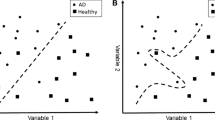
Overview
- Demonstrates a method to implement machine learning and data mining using look-up tables, rather than neural networks
- Enables application on edge computing devices, where low power dissipation and high speed are essential
- Describes a method that derives classifiers simple enough for human interpretation
Part of the book series: Synthesis Lectures on Digital Circuits & Systems (SLDCS)
Access this book
Tax calculation will be finalised at checkout
Other ways to access
About this book
The methodology described in this book involves extracting a set of rules from a training set, composed of categorical variable vectors and their corresponding classes. Unnecessary variables are eliminated, and the rules are simplified before being transformed into a sum-of-products (SOP) form. The resulting SOP exhibits the ability to generalize and predict outputs for new inputs. The effectiveness of this approach is demonstrated through numerous examples and experimental results using the University of California-Irvine (UCI) dataset.
This book is primarily intended for graduate students and researchers in the fields of logic synthesis, machine learning, and data mining. It assumes a foundational understanding of logic synthesis, while familiarity with linear algebra and statistics would be beneficial for readers.
Similar content being viewed by others
Keywords
Table of contents (12 chapters)
-
Front Matter
-
Back Matter
Authors and Affiliations
About the author
Bibliographic Information
Book Title: Classification Functions for Machine Learning and Data Mining
Authors: Tsutomu Sasao
Series Title: Synthesis Lectures on Digital Circuits & Systems
DOI: https://doi.org/10.1007/978-3-031-35347-5
Publisher: Springer Cham
eBook Packages: Synthesis Collection of Technology (R0)
Copyright Information: The Editor(s) (if applicable) and The Author(s), under exclusive license to Springer Nature Switzerland AG 2024
Hardcover ISBN: 978-3-031-35346-8Published: 15 July 2023
Softcover ISBN: 978-3-031-35349-9Due: 15 August 2023
eBook ISBN: 978-3-031-35347-5Published: 14 July 2023
Series ISSN: 1932-3166
Series E-ISSN: 1932-3174
Edition Number: 1
Number of Pages: XIII, 144
Number of Illustrations: 19 b/w illustrations, 26 illustrations in colour
Topics: Circuits and Systems, Data Mining and Knowledge Discovery, Machine Learning



